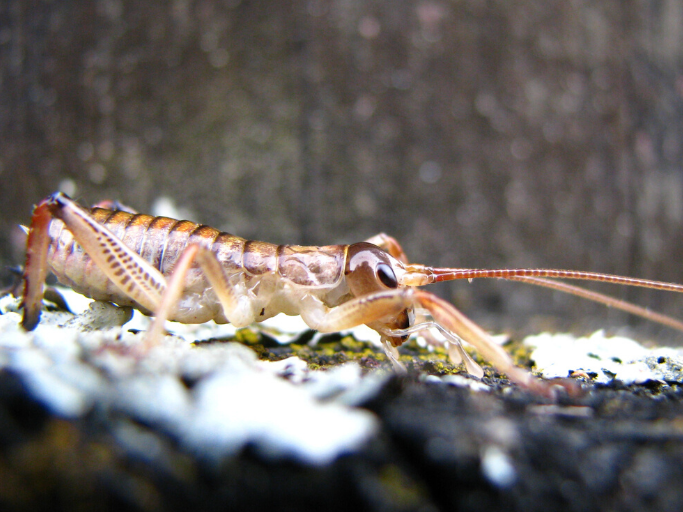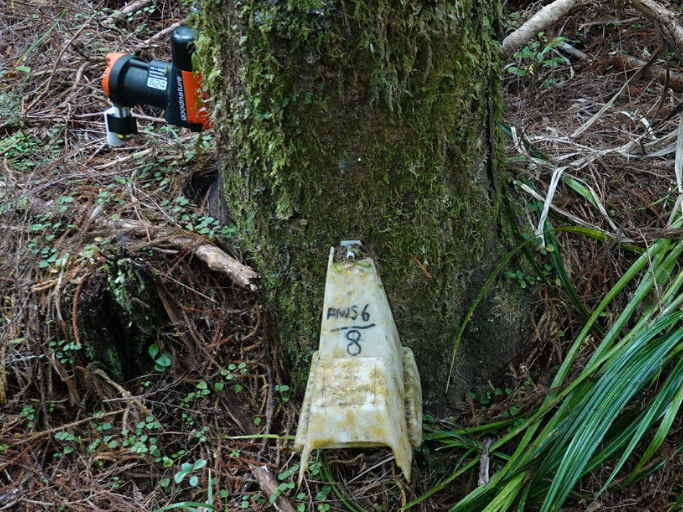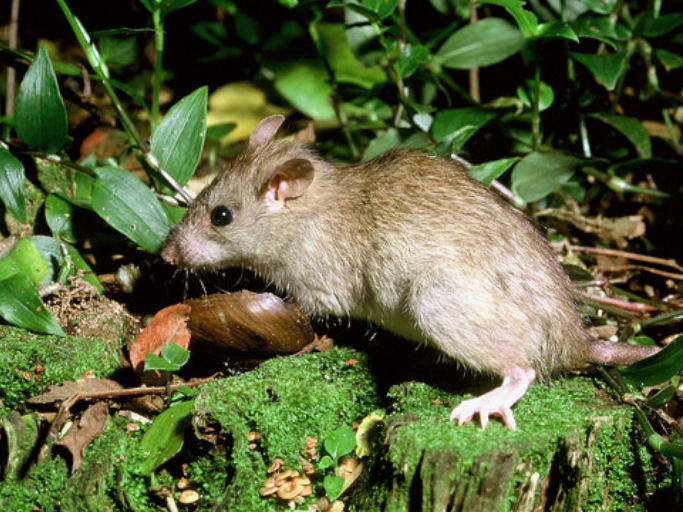ON THIS PAGE
Baits vs. traps
Bait stations can save time, money and resources over large areas where rat numbers are high. Toxic baits can be an effective knockdown tool to begin with, followed by trapping to keep numbers down. It is recommended that you alternate baiting with trapping for ongoing control over large areas.
All tools have their advantages, limitations and risks. Overusing the same tool can lead to it becoming ineffective. Baits can also pose a risk to dogs, livestock, and other non-target species. Bait stations should always be clearly signposted and any neighbouring properties should be notified that toxic baits are in use. Prolonged use of toxic baits also affects the environment.
The information below is intended as an overview, with no endorsements of individual products. It’s important to get region-specific advice from your council or DOC about best practice, as well as obtaining any necessary permits.

Bait stations
If you’re new to bait stations, read our introduction to bait stations section.
- All toxins should be contained in lockable bait stations and placed out of reach of non-target species, at least 5 metres away from walking tracks on public property, and clearly signposted.
- Use bait stations that secure the bait – this is to prevent animals stealing and storing the bait, to prevent ground spillage, and to protect other non-target species.
- Common bait stations for rodents include Pestoff and Philproof. See our guide on where to buy equipment.

- Placement will depend on your target area, accessibility, and proximity to non-target species. Generally, bait stations should be about 50m apart along lines which are 100m apart. Keep a record of your bait stations as well as which baits you’ve used and when.
- For advice on bait stations in parks and reserves, contact your council.
- Make sure grass is controlled at trap or bait station entrances, a metre or more from entrances. This prevents bait going mouldy and makes it easier for predators to access.
- Remove old or mouldy bait for careful disposal (see product label for advice). Do not overfill bait stations.
Safety tips
Toxins are poisons and their misuse can affect people, plants, livestock, pets and other non-target species. Improper use can lead to excessive toxin buildup in the environment.
- Always follow the manufacturer’s instructions, product label and Safety Data Sheet – to avoid buildup or poisoning it’s crucial to use as per the label
- Wear protective gear (e.g. strong rubber or leather gloves, face mask), keep toxins contained in bait stations and make sure stations are clearly signposted.
- Most poisons have antidotes but they must be administered by a vet/doctor in the early stages.
- If poisoning is suspected, contact a vet/doctor immediately or call the National Poisons Centre on 0800 764 766 (0800 POISON).
- Remove old or unused bait before refilling stations and avoid ground spillage. Dispose of it responsibly offsite (read product labels for advice).
- Place bait stations at least 5 metres from public walkways and back from waterways. Ensure livestock, dogs and children cannot access the bait stations (always secure them well if on fences and facing away from paddocks; place at heights where they cannot access the bait).
- Lockable, tamper-proof stations are best and all stations should be secured to the ground with metal pins or attached to a stake or tree. This reduces the chances of non-target interference especially by children, livestock or dogs. Include clear warning signs.
In populated areas and backyards, consider trapping – see our guide to rat trapping (PDF, 255KB).
Which baits to use and when
We have written a summary of toxins for controlling rats. For more details about each one, see below.
Unlike 1080 or cyanide, these toxins don’t require a Controlled Substance Licence (CSL) but they do need to be contained in lockable bait stations.
For definitions and explanations of first vs. second generation and single feed vs. multi feed, read our summary of toxins.

Brodifacoum (aka Pestoff)
Brodifacoum can be used for controlling low numbers of rats and is commonly used in small parks and reserves. Pellets are dyed blue. It’s a second-generation toxin, so there’s a high risk of poisoning for non-target species such as dogs, livestock and game animals (from eating the bait or eating rats/possums that have eaten it). Bait stations should be out of reach of non-target species. Avoid using brodifacoum in areas with livestock.
Where to buy: Your local hardware store or farm supply stores, in cereal or block form.
When to use: August, November, January, April. Fill the bait stations on day one. Replace any bait eaten initially over the next 6-8 days. Remove any uneaten, mouldy or damaged bait before refilling stations. Dispose of any old or unused bait according to the product label. Repeat baiting only after 4-5 weeks have passed so that lethally poisoned animals die and do not keep taking bait. This also allows less dominant animals to gain the confidence to eat out of stations. In most situations, 4-5 applications per year will be enough to reduce possum densities and maintain them year-round at low numbers.
Remove any uneaten bait after four weeks and dispose of as per manufacturer’s label. Follow the manufacturer’s instructions on amounts of bait to use per bait station. Note: rats are unlikely to eat mouldy/stale bait.
Antidote: Vitamin K. Warning signs need to remain out for 12 months after bait has been removed.
Bromadiolone (aka Rentokil Rid Rat, Contrac Rodent Blox)
Bromadiolone is a second generation, single-feed toxin and can be used to control low numbers of rats. There’s a medium-to-high risk of poisoning for non-target species such as dogs, livestock and game animals (from eating the bait or eating rats/possums that have eaten it). Bait stations should be out of reach of non-target species. Avoid using bromadiolone in areas with livestock. Suitable for parks and reserves in bait block form, contained in lockable bait stations.
Where to buy: Your local hardware store.
When to use: Maintain an uninterrupted supply of fresh bait until signs of rat activity cease. Pulse four times per year in August, November, January and April. Fill bait stations on day 1, then refill on days 5 and 14. Remove bait at the end of week 4.
Antidote: Vitamin K.
Cholecalciferol (aka Vitamin D3, Feracol, D3 Rat One)
Cholecalciferol is a multi-feed bait with a low risk of primary or secondary poisoning (i.e. non-target animals eating the bait, or eating other animals that have eaten the bait) compared with brodifacoum. Can be used on all densities of rats. It can be more expensive than other bait options and there is no antidote (although treatment of the symptoms is possible if poisoning is detected soon enough). Warning signs must remain until at least 3 months after baits have been removed. For best results, pre-feed with Ferafeed for one to two weeks before each toxin application to avoid bait shyness. No CSL required. To find out more, contact the Biosecurity team of your local regional council.
Where to buy: From the manufacturers (e.g. Connovation) and pest control supply companies (e.g. Pestoff).
How to use: Pre-feed for 1-2 weeks with Ferafeed. Replace it with toxic bait at the end of the pre-feeding period. Refill bait stations with toxic bait approximately 3 days later, and again after 7 days if bait take has continued. Replace eaten toxic baits only once or twice before again pre-feeding if ongoing control is required. Remove any uneaten bait after two weeks and dispose of as per manufacturer’s label. Follow the manufacturer’s instructions on amounts of bait to use per bait station.
Diphacinone (aka Ratabate, Ditrac, Pestoff)
Diphacinone is a first generation anticoagulant. Rats must feed on the bait for a minimum of five consecutive days to consume a lethal dose. If rats are only sub-lethally poisoned, they may develop resistance to first generation anticoagulants. Less effective on mice (they often have to eat more than 2x their own body weight to get a lethal dose).
There’s a lower risk of secondary poisoning than with brodifacoum. Can be useful for controlling lower numbers over small areas. Pellets are dyed green. Needs to be rotated with other baits over time (such as pindone, cholecalciferol and others). Suitable for parks and reserves and private property.
Where to buy: Online.
When to use: Pulse four times per year in August, November, January and April. Fill bait stations on day one, then apply sufficient bait to ensure a continuous supply over a 5 day period and repeat at 2-4 weekly intervals. Follow the manufacturer’s instructions on disposal of old or excess bait and amounts of bait to use per bait station. More bait may need to be used where rat densities are high or where regular servicing of bait stations is not possible.
Antidote: Vitamin K. If this product is used in a place with public access, the person in charge must erect signs at every normal point of entry to warn people that the product has been applied in the area. Signs must remain in place for a period of 2 months after baits have been retrieved or, if baits are not retrieved, signs must remain for 8 months after the last application of bait.
Pindone
Pindone is a first generation anticoagulant (blood thinner). Rats must feed on the bait for a minimum of five consecutive days to consume a lethal dose. If rats are only sub-lethally poisoned, there is the potential for rats to develop resistance to first generation anticoagulants. Not a knockdown tool but effective at controlling rat populations to keep numbers low. Suitable for large parks and reserves or private property if used in bait block form and contained in lockable bait stations. Avoid using pindone in areas with livestock. Baits are dyed green. Rotate with other toxins over time to avoid bait shyness.
Where to buy: Farming supply stores.
When to use: August, November, January and April. Fill bait stations on day one, then refill on days three and five. Refill again on day 14. (If less than half the bait is still there when you refill on day 14, consider refilling on day 17 as well until signs of rodent activity have ceased). Follow the manufacturer’s instructions on amounts of bait to use per bait station. This is important because low and high numbers of rats and possums require different volumes in bait stations. Remove bait at the end of week 4.
Antidote: Vitamin K.
Diphacinone + cholecalciferol (aka Double Tap)
When cholecalciferol is combined with diphacinone, the anticoagulant (blood thinning) properties of diphacinone are enhanced. It yields similar results to brodifacoum, but without the residue issues. Suitable for most densities of rats. Warning signs must remain until at least 2 months after baits have been removed. No CSL required. To find out more, contact the Biosecurity team of your local regional council.
Where to buy: From the manufacturer (Connovation).
How to use: Fill bait stations on day one. Check and refill where necessary after 6-10 days and continue use for 2-2.5 months to manage the control of all resident and immigrant possums and rats. Follow the manufacturer’s instructions on amounts of bait to use per bait station. Remove any uneaten bait after four weeks and dispose of as per manufacturer’s label.

